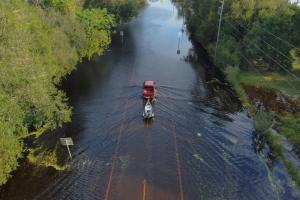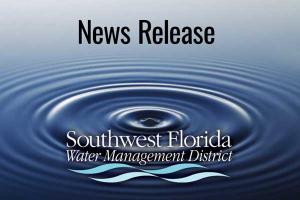Search Content
Displaying results 1741 - 1760 of 4920
The Southwest Florida Water Management District Governing Board Tuesday concurred with an emergency authorization allowing the Peace River/Manasota Regional Water Supply Authority (Authority) to utilize its existing Aquifer Storage and Recovery (ASR) wellfields for the temporary production of ground water to meet regional demand.The Authority’s ASR wellfields are normally used to store excess treated surface water from its permitted Peace River withdrawals for later…
Eugene Schiller, the Southwest Florida Water Management District’s deputy executive director of management services, has been selected to serve on the Department of the Interior’s National Geospatial Advisory Committee for a two-year term effective immediately. Schiller was appointed by the Secretary of the Interior, Dirk Kempthorne, to represent regional government.Schiller is among 28 individuals chosen by panelists from various federal agencies. More than…
Minimizing flood risks is an important part of the mission of the Southwest Florida Water Management District (District). The District and local governments work together to minimize flooding impacts, protect personal property and assist flood victims during and after storm events. Learn more about those efforts below, and click the tiles for Frequently Asked Questions related to flooding or who to contact when flooding.
table(webalert). |Who:|Teams entered so far include Cornerstone Solutions Group, the Industry Team, the Luke Brothers, Pay it Forward Farm, Raymow, Tampa Bay Landscaping, Wildrose Lawncare and the "Southwest Florida Water Management District(Southwest Florida Water Management District)":http://watermatters.org.Station leaders include Gary England from the University of Florida at the Right Plant Right Place station, Chris Hayes from BioWorks at the Pest Management station,…
Who: Southwest Florida Water Management District Basin Board members and staff; Mike Hickman, Hickman Homes, Inc. president; and the Polk County Builders AssociationWhat: The District will celebrate the completion of a Florida Water StarSM Gold (FWSG) certified home that will be featured in the Polk County Parade of Homes. The fall Parade of Homes is Oct. 17-18 and Oct. 24-25.FWSG is a certification program for builders and developers. The program encourages water…
Governor Ron DeSantis appointed Elijah “Ed” Armstrong, III and John Mitten to the Southwest Florida Water Management District's Governing Board. Armstrong represents Pinellas County and Mitten represents Hernando and Marion counties.
Armstrong, of Dunedin, is an attorney with Hill Ward Henderson, P.A. He earned his bachelor’s degree in accounting from the University of Maryland and his juris doctor from Vanderbilt University. Armstrong is appointed to a four-year term…
The Southwest Florida Water Management District (District) awarded $119,000 in grants to 65 schools within the District as part of the Splash! school grant program. The program provides up to $3,000 per school to enhance student knowledge of freshwater resources in grades K-12.
Splash! grants encourage hands-on student learning through STEM (science, technology, engineering and mathematics) activities as well as engagement of the greater school community through…
Southwest Florida Water Management District Executive Director David Moore signed two water shortage emergency orders last week that will allow the City of Tampa to withdraw additional water from Sulphur Springs and Tampa Bay Water (TBW) to withdraw additional water from the Tampa Bypass Canal to help meet the potable water demand of its member governments.Ongoing drought conditions have caused an acute water shortage within the region, so emergency actions are necessary to…
"The Southwest Florida Water Management District":http://www.swfwmd.state.fl.us/ (District) and City of Crystal River will hold a groundbreaking event to celebrate the start of a project to transport reclaimed water from the City to the Duke Energy power plant facility in Citrus County.The event will take place on Thursday, May 22, at 10:00 a.m. at the City of Crystal River Sprayfield, located at 7040 N. Citrus Ave. in Crystal River. The entrance is approximately five miles…
The Southwest Florida Water Management District (District) awarded $97,640.28 in grants to 43 educators within the District as part of the Splash! school grant program. The program provides up to $3,000 per school to enhance student knowledge of freshwater resources in grades K-12.
Splash! grants encourage hands-on student learning through STEM (science, technology, engineering and mathematics) activities as well as engagement of the greater school community…


